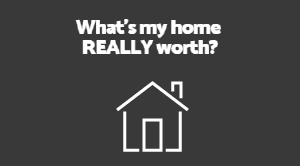-
Lot Size
-
Home Size1,550 sqft
-
Beds4 Beds
-
Baths2 Baths
-
Year Built1978
-
Days on Market6
The Forecast of 2014’s Interest Rates
- Neighborhoods and News
- Linda Moore, money market interest rates, mortgage rates, Real Estate in San Diego, Reduction of Quantitative Easing, San Diego real estate
- January 3, 2014
We’ve reached the New Year. The rates in mortgage keep on increasing, however money market interest rates and certificates of deposit are not according to an article in the San Diego Union-Times.
Mortgage rates rose to as high as a full percentage point while savings accounts paid out a mere 0.1 percent in interest. This was a pattern that occurred in 2013 that looks to linger into 2014. According to the Freddie Mac Report, ‘the average 30-year fixed mortgage rate began 2013 at an average 3.34 percent, only to climb to 4.53 as of Thursday.’
What is going to hurt affordability is the Federal Reserve reducing Quantitative Easing – which is the administering of new funding into the money supply by a central bank. Analysts find that rates such as mortgages and Treasury notes to rise through 2014 according to U-T San Diego.
“You did miss the party in terms of the bottom,” said University of San Diego real estate professor Norm Miller to the San Diego Union-Times. “You’re going to be paying more, and you might have this fear that I’s going to get away from you and you have to jump now, but that’s an irrational fear.”
The price of San Diego real estate won’t have the similar profits they had during the summer- which was 24 percent year-over-year. The gain will be at about five percent on the year-over-year, which is traditionally a steady numeric.
There are different expectations from many different analysts though. Bankrate.com’s senior financial analyst Greg McBride told the Union-Times that he feels the 30-year fixed mortgage rate of the housing market could reach 5.5 percent by December as long as the increase happens slow and steady escalation.
While San Diego State Business professor Dan Seiver thinks the housing market will find assistance by repressed demand, faltering of unemployment and increasing wages, despite the rates rising.
In May 2013 the 30-year fixed rate displayed its lowest in the foresaid year at 3.35 percent, while the following month rose to an astounding 4.46 percent.
“It’s the better economy that’s getting people to buy houses,” McBride said to the Union-Times. “If we saw a sharp jump in rates like we did in the middle of last year, it would definitely take a bite out of demand. I think it’s all in how quickly we get from here to there.”
The analysts, even though they all hold different expectations of the market, rest assured there will be few dips in the mortgage and interest rates in the foreseeable months.





